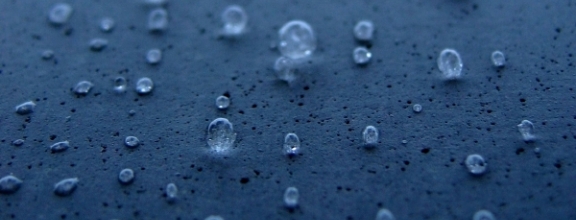Basement Moisture Control for Massachusetts Homes

Basement Moisture Control Solutions
Basement floors in New England are notorious for dampness. Because dampness creates mold and unhealthy air quality, basement moisture control is a must for homeowners. Excessive moisture can cause unhealthy air quality throughout your entire home.
There are a few easy solutions.
- Simple Moisture Test – The easiest test is to tape a 1-foot square of basic plastic wrap to your concrete floor. Tape down all four sides with duct tape. Let sit for 48 hours. If moisture shows on the plastic or the concrete floor becomes dark, then moisture is coming up through your floor. Because concrete is porous, moisture vapor can wick upwards through the concrete due to excessive moisture pressure. This excess pressure is caused by water along your foundation walls or beneath the slab.
- Check Your Gutters – Frequently faulty gutters and downspouts are a major source of basement moisture. Check to make sure your gutters are clean of leaves and other debris. Then check your downspouts to make sure the water runoff is away from your foundation.
- Foundation Walls – Use Drylok or similar waterproofing paint on the walls. Apply a heavy coat with a roller and paint all the corners. If you have cracks along the interior foundation wall, be sure to fill and patch.
- Concrete Floor – As mentioned in step 1, you can do a simple test with tape and plastic to determine if moisture is wicking through your slab. Another tell tale sign is perpetual dust on the floor. If your concrete floor is dusty, this is a sign of moisture pressure pushing efflorescence upwards through the slab.
- Best Flooring Options – One of the best solutions for reducing the moisture control issues on your floor is to apply a concrete resurfacing overlay or self leveling cement coating. There are many professionals who specialize basement moisture barrier control using these coatings. The first and most important step is application of a primer. The best is to apply a milky white, liquid polymer, which will soak into the surface. This step will substantially reduce moisture. Then apply the resurfacing concrete overlay. Self leveling concrete and overlays range from 1/16th – 3/8th inch thick. Be sure not to apply an overlay to high against stairs. It’s important that your step height complies with proper code.
- Applying sealers – If you are looking for an inexpensive solution, apply water-based sealers to your concrete flooring. Water-based sealers will allow any moisture that wicks through the surface to pass thru the sealer. You don’t want a sealer or coating that will not breath otherwise you run the risk of delamination.
- Concrete Floor Paint – At most home improvement stores, you will find epoxy paint kits. These are inexpensive, thin coatings to roll on the floor. If you do have dusting on the surface, it’s likely the epoxy paint will not adhere. A simple test is to apply duct tape to the surface. If it easily pulls off, there is a good chance floor paint will peel off unless you first apply a penetrating sealer.
- Epoxy Coatings – Epoxy coatings do not breathe. Epoxies do not allow moisture to pass through like cementitious overlays do. The risk is the epoxy will delaminate. We’ve seen cases where floors have excess moisture that causes epoxy to peel off the floor in sheets. If you are considering epoxy, be sure to first apply a penetrating moisture vapor prevention primer.
Latest posts by Ed Winslow (see all)
- Urethane Cement Installation in South Boston at Stavis Seafood - March 14, 2024
- Metal and Steel Deck Coatings for Woods Hole to Martha’s Vineyard MA Ferry - February 22, 2024
- Industrial Epoxy Floor and Urethane Installation Wakefield, Ma - May 16, 2023
